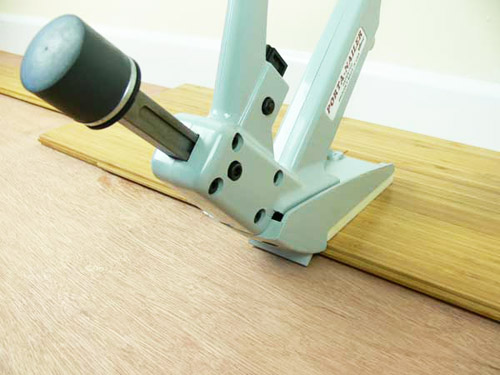Bamboo flooring can require different installation methods depending on the existing subfloor in your property. Before you install your bamboo floor you must ensure that the subfloor is of sound quality – it must be flat, level and dry, otherwise it may cause damage to the flooring once it is installed.

Installing bamboo flooring onto joists
Bamboo flooring can only be installed directly onto joists if it is over 18mm in thickness. It should be secret nailed or secret screwed down directly into the joists. If the flooring is not 18mm thick then a layer of 18mm plywood or chipboard should be installed first, and then the bamboo can be fitted on top (see below for installation methods).
Installing bamboo flooring onto wooden floor boards or plywood
Bamboo flooring can either be secured down by secret nailing or secret screwing, but the flooring planks must run perpendicular to the existing floor boards. It can also be glued down to plywood, and floor boards if they are clean (not lacquered or oiled). Alternatively, your bamboo flooring can be loose laid (floated) over an underlay.

Installing bamboo flooring onto chipboard
If you have a chipboard subfloor then the bamboo flooring can either be glued directly down to it, or floated over an underlay without fixing it down. Chipboard is not strong or secure enough for secret nailing or secret screwing.
Installing bamboo flooring onto concrete or screed
Bamboo flooring can be either glued directly onto the concrete (or screed) or floated over an underlay.
Installing bamboo flooring onto asphalt
If you have an asphalt subfloor (a black, smooth compound), then a Sika MB Primer must be used before the flooring adhesive will adhere to it. The bamboo flooring can then be glued directly down to the subfloor. Alternatively, the bamboo flooring can be floated over an underlay, without fixing it down.
Installing bamboo flooring onto bitumen
If you have a concrete floor with some bitumen residue, then the bamboo flooring must be floated over an underlay.







